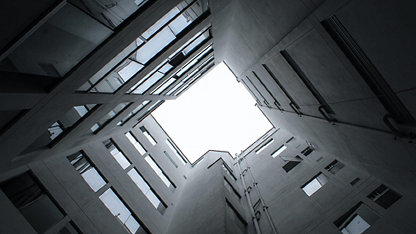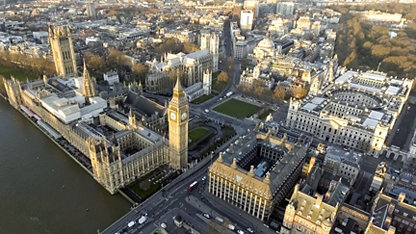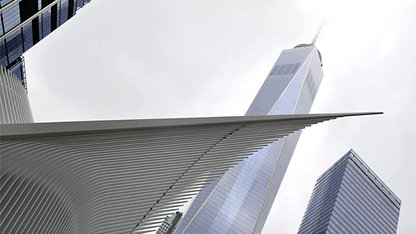- Construction activity contracts across all regions in Q2 amid lockdown and impact of social distancing measures
- 25% of projects were halted in the second quarter, and on-site productivity is predicted to fall 12%
- Expected cost escalations to put significant pressure on markets over next twelve months
- Infrastructure expected to lead a sluggish recovery, highlighting need to attract greater private capital through standardised and reliable data
The full impact of government lockdowns on construction activity was realised in the second quarter of 2020, with 25% of projects put on hold according RICS’ latest Global Construction Monitor.
RICS’ Global Construction Activity Index[1], a measure of current and expected construction market conditions among construction professionals read -24 in Q2, highlighting both the hit to activity, and a subdued outlook. While this measure was negative across regions, it was lowest in the Middle East and Africa (-40), and highest in the Americas (-14).
Download global and regional Construction Monitors
Falling sentiment reflects the impact lockdown and social distancing measures have had on construction projects. Professionals in the sector report that 25% of projects globally were put on hold as a result of lockdowns, with more placed on hold in the Middle East and Africa than in other regions.
Sluggish bounce back envisaged in construction as productivity set to decline
Looking ahead, respondents don’t envisage an immediate bounce-back in activity. Only 20% of projects on hold are expected to restart imminently. On average, these are expected to be on hold for another 131 days. The good news is that only 0.3% of projects globally are expected to be permanently cancelled.
And for projects that continue, social distancing and health and safety precautions will restrict activity. Professionals in the sector expect onsite construction productivity to contract 11.7% globally, although there is some variation. While respondents in Singapore expect a 26% pullback, European markets broadly expect to see a single-digit decline in productivity, as do respondents in China, Canada, Australia and New Zealand.
Infrastructure set to lead subdued recovery
Globally, professionals in the sector expect private non-residential workloads to contract further. By contrast, work on infrastructure is expected to expand over the next twelve months, albeit modestly. This follows some governments’ attempts to expedite projects in order to stimulate economic activity, largely led by Asia Pacific and the Americas.
Sean Ellison, Senior Economist, RICS, commented: “A V-shaped rebound in construction seems an unlikely prospect while concerns remain around the transmission of the virus. The sites that managed to remain open or have reopened are seeing productivity reduced by necessary steps to protect workers’ health and wellbeing. This may trigger greater innovation, whether through adoption of new technology or modular construction, to offset productivity losses. But even so, the economic backdrop presents an additional and more substantial challenge yet - dampening demand.
“A V-shaped rebound in construction seems an unlikely prospect while concerns remain around the transmission of the virus.. ”
Sean Ellison
Senior Economist, RICS
“Infrastructure is one bright spot, and we have seen multiple governments reaffirm their commitment to infrastructure spending in response to the pandemic. Accelerating and delivering on ‘shovel ready’ projects will provide a firmer footing to many firms in the sector, supporting those further up in the supply chain.”
Margin pressure mounts as underbidding emerges
While the global shock to demand has prevented tender prices from rising, the cost of materials has also risen, driving construction costs higher. As a result, respondents almost universally noted deteriorating margins in Q2, and they expect it to persist for the next twelve months.
At the same time, underbidding is taking place. 44% of respondents reported consistently receiving tender bids below realistic estimates for cost. On average, these underbids are 6.9% below cost.
With activity falling, and margins under rising pressure, respondents also reported a sharp reduction in headcounts, and expect this trend to persist for the next 12 months.
Alan Muse, Global Director of the Built Environment, RICS, commented: “As the industry comes under mounting financial pressure, we can’t afford to repeat the mistakes of the last global recession. Rising costs may challenge the viability of some schemes, but it is equally important we do not see the procurement process become a race to the bottom on price. Doing so is incompatible with the need to build back better. Considering procurement decisions through a wider lens, covering both financial and ESG drivers, will help to avoid low margins and disputes as the industry recovers.
“As the industry comes under mounting financial pressure, we can’t afford to repeat the mistakes of the last global recession... Considering procurement decisions through a wider lens, covering both financial and ESG drivers, will help to avoid low margins and disputes as the industry recovers. ”
Alan Muse
Global Director of the Built Environment, RICS
“More broadly, a global economic recovery depends on the health of the construction industry, and its health depends on the flow of investment into new projects. We can expect public spending on infrastructure projects that are already advanced, but we must refocus collective efforts on unlocking private capital too. Making infrastructure more attractive to global investors means greater transparency and better metrics - improving the quality and standardisation of data, whether relating to construction costs or an asset’s performance.”
[1] The Global Construction Activity Index is a weighted composite measure encompassing variables on current and expected market activity as well as margin pressures















